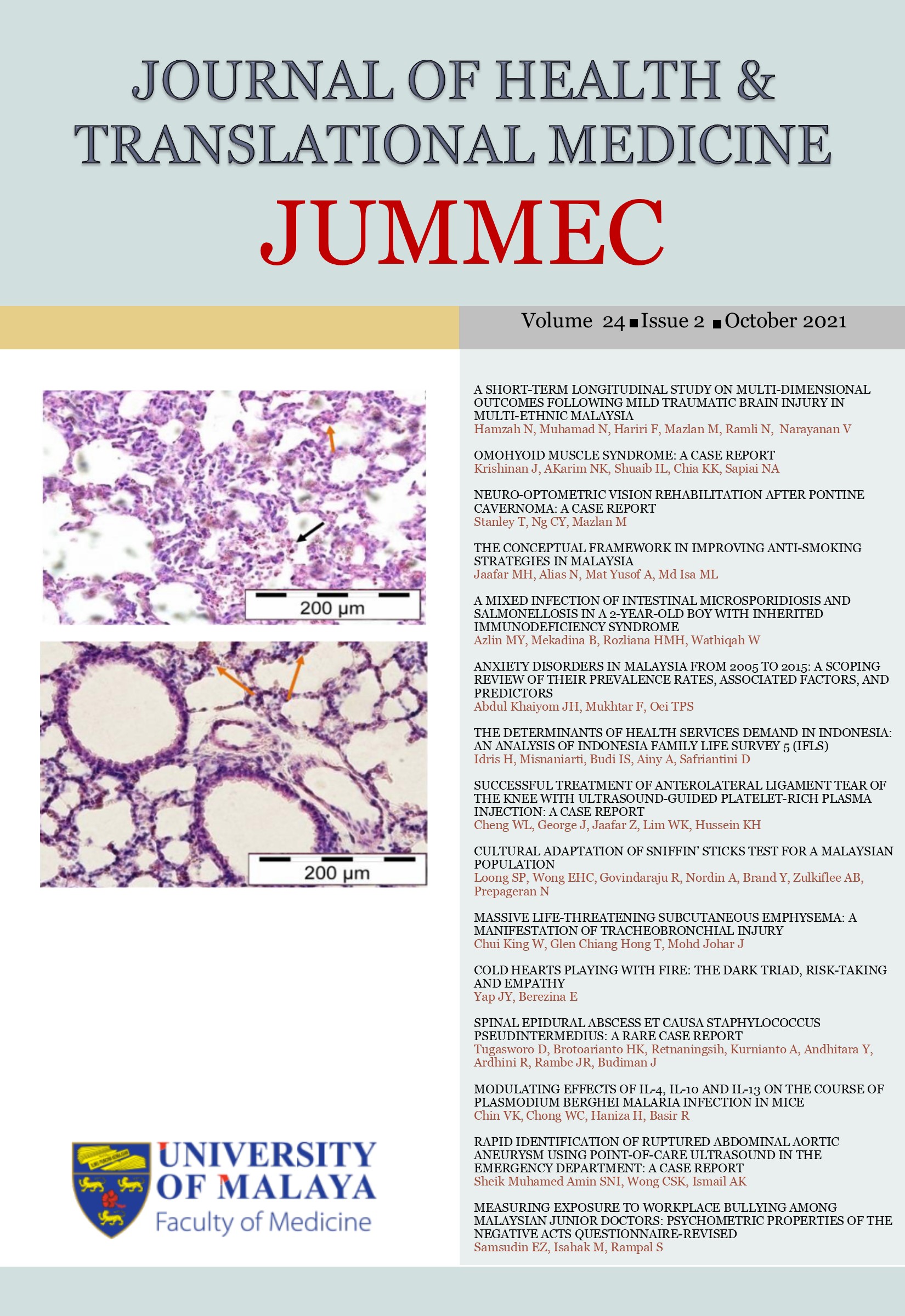MEASURING EXPOSURE TO WORKPLACE BULLYING AMONG MALAYSIAN JUNIOR DOCTORS: PSYCHOMETRIC PROPERTIES OF THE NEGATIVE ACTS QUESTIONNAIRE-REVISED
Received 2020-11-19; Accepted 2021-09-13; Published 2021-10-07
DOI:
https://doi.org/10.22452/jummec.vol24no2.15Keywords:
Negative Acts Questionnaire-Revised, workplace bullying, psychometric properties, validity, reliabilityAbstract
Background: The Negative Acts Questionnaire (NAQ-R) is a widely used measure of workplace bullying. However, studies examining its psychometric properties for use among Malaysian junior doctors have not been published. The study aims to determine its validity and reliability in assessing bullying among a Malaysian sample.
Methods: The NAQ-R was administered to 1,119 junior doctors working in twelve government hospitals accredited for housemanship training within the central zone of Malaysia. A subset of participants (n=50) completed the NAQ-R twice at an interval of two weeks. Exploratory factor analysis was conducted to assess construct validity, using polychoric factor analysis with varimax rotation. To determine reliability, Cronbach’s alpha was computed to assess internal consistency reliability, while intraclass correlation coefficient was calculated to examine test retest reliability.
Results: Analysis yielded a one-factor structure of the NAQ-R, consistent with the interpretation of factors provided by the original instrument. The factor was labelled “workplace bullying” and accounted for 68.0% of the variance in the junior doctor group. Factor loadings ranged from 0.68 to 0.90. The Cronbach’s alpha for the NAQ-R items ranged from 0.96 to 0.97, and the Cronbach’s alpha for the overall scale was 0.97. Meanwhile, the ICC for the NAQ-R items ranged from 45.6% to 93.7%, and the ICC for NAQ-R total score was 93.4%. These indices denote high internal consistency reliability and excellent test-retest reliability respectively.
Conclusion: The NAQ-R has adequate psychometric properties and can be used to measure workplace bullying among Malaysian junior doctors.
Downloads
Downloads
Published
Issue
Section
License
All authors agree that the article, if editorially accepted for publication, shall be licensed under the Creative Commons Attribution License 4.0 to allow others to freely access, copy and use research provided the author is correctly attributed, unless otherwise stated. All articles are available online without charge or other barriers to access. However, anyone wishing to reproduce large quantities of an article (250+) should inform the publisher. Any opinion expressed in the articles are those of the authors and do not reflect that of the University of Malaya, 50603 Kuala Lumpur, Malaysia.


